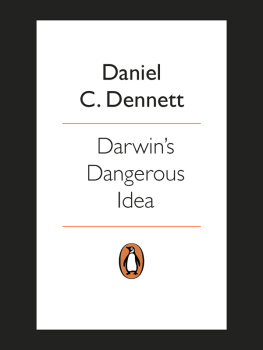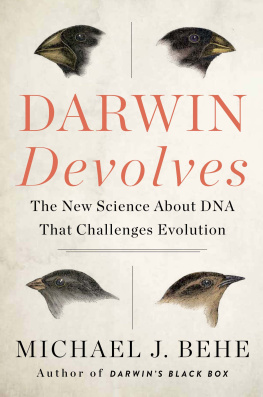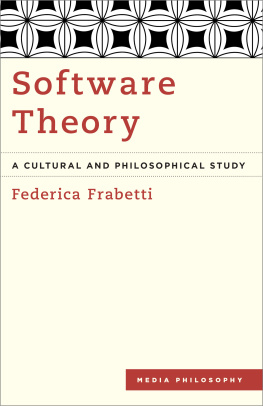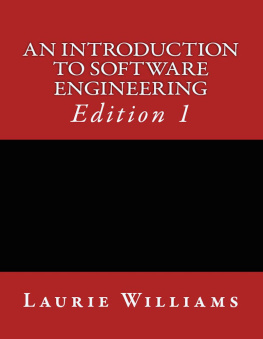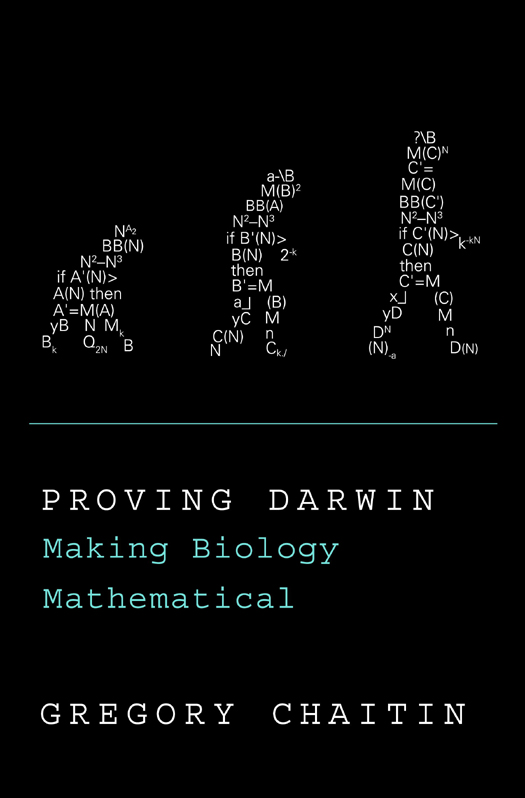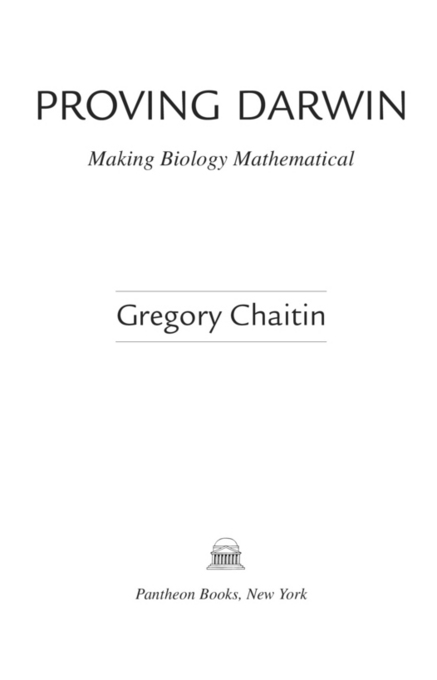A Parable
Once upon a time a young rabbinical student went to hear three lectures by a famous rabbi. Afterwards he told his friends: The first talk was brilliant, clear and simple. I understood every word. The second was even better, deep and subtle. I didnt understand much, but the rabbi understood all of it. The third was by far the finest, a great and unforgettable experience. I understood nothing and the rabbi didnt understand much either.
Niels Bohr
From Niels Bohrs Times by Abraham Pais
Copyright 2012 by Gregory Chaitin
All rights reserved. Published in the United States by Pantheon Books, a division of Random House, Inc., New York, and in Canada by Random House of Canada Limited, Toronto.
Pantheon Books and colophon are registered trademarks of Random House, Inc.
Grateful acknowledgment is made to the following for permission to reprint previously published material: Springer Science+Business Media B.V.: Problem Solvers and Theorizers from Indiscrete Thoughts by Gian-Carlo Rota (Boston: Birkhuser, 1997). Used by permission of Springer Science+Business Media B.V. Marina v.N. Whitman: Excerpt from The General and Logical Theory of Automata by John von Neumann, originally published in Cerebral Mechanisms in Behavior: The Hixon Symposium edited by Lloyd Jeffries (New York: John Wiley and Sons, 1951). Used by permission of Marina v.N. Whitman.
Library of Congress Cataloging-in-Publication Data
Chaitin, Gregory J.
Proving Darwin : making biology mathematical / Gregory Chaitin
p. cm.
eISBN: 978-0-307-90746-2
1. Evolution (Biology)Mathematics.2. Biomathematics.
3. Evolution (Biology)Mathematical models. 4. Biology
Mathematical models. 5. Evolution (Biology)Philosophy.
6. BiologyPhilosophy. 7. Computer programmingPhilosophy.
I. Title.
QH371.3.M37C42 2012 576.82dc23 2011040689
www.pantheonbooks.com
The illustrations at the beginning of each chapter are from
Kunstformen der Natur (Art Forms in Nature) by Ernst Haeckel.
Jacket design by Jason Booher
v3.1
Contradictory Quotes?
The chance that higher life forms might have emerged in this way [by Darwinian evolution] is comparable to the chance that a tornado sweeping through a junkyard might assemble a Boeing 747 from the materials therein.
Fred Hoyle,
The Intelligent Universe, 1983
In my opinion, if Darwins theory is as simple, fundamental and basic as its adherents believe, then there ought to be an equally fundamental mathematical theory about this, that expresses these ideas with the generality, precision and degree of abstractness that we are accustomed to demand in pure mathematics.
Gregory Chaitin,
Speculations on Biology, Information and Complexity,
EATCS Bulletin, February 2007
Mathematics is able to deal successfully only with the simplest of situations, more precisely, with a complex situation only to the extent that rare good fortune makes this complex situation hinge upon a few dominant simple factors. Beyond the well-traversed path, mathematics loses its bearings in a jungle of unnamed special functions and impenetrable combinatorial particularities. Thus, the mathematical technique can only reach far if it starts from a point close to the simple essentials of a problem which has simple essentials. That form of wisdom which is the opposite of single-mindedness, the ability to keep many threads in hand, to draw for an argument from many disparate sources, is quite foreign to mathematics.
Jacob T. Schwartz,
The Pernicious Influence of Mathematics on Science (1960),
in Discrete Thoughts: Essays on Mathematics, Science,
and Philosophy, edited by Mark Kac, Gian-Carlo Rota
and Jacob T. Schwartz, 1992
Contents
Problem Solvers and Theorizers
by Gian-Carlo Rota
Mathematicians can be subdivided into two types: problem solvers and theorizers. Most mathematicians are a mixture of the two although it is easy to find extreme examples of both types.
To the problem solver, the supreme achievement in mathematics is the solution to a problem that had been given up as hopeless. It matters little that the solution may be clumsy; all that counts is that it should be the first and that the proof be correct. Once the problem solver finds the solution, he will permanently lose interest in it, and will listen to new and simplified proofs with an air of condescension suffused with boredom.
The problem solver is a conservative at heart. For him, mathematics consists of a sequence of challenges to be met, an obstacle course of problems. The mathematical concepts required to state mathematical problems are tacitly assumed to be eternal and immutable.
Mathematical exposition is regarded as an inferior undertaking. New theories are viewed with deep suspicion, as intruders who must prove their worth by posing challenging problems before they can gain attention. The problem solver resents generalizations, especially those that may succeed in trivializing the solution of one of his problems.
The problem solver is the role model for budding young mathematicians. When we describe to the public the conquests of mathematics, our shining heroes are the problem solvers.
To the theorizer, the supreme achievement of mathematics is a theory that sheds sudden light on some incomprehensible phenomenon. Success in mathematics does not lie in solving problems but in their trivialization. The moment of glory comes with the discovery of a new theory that does not solve any of the old problems but renders them irrelevant.
The theorizer is a revolutionary at heart. Mathematical concepts received from the past are regarded as imperfect instances of more general ones yet to be discovered. Mathematical exposition is considered a more difficult undertaking than mathematical research.
To the theorizer, the only mathematics that will survive are the definitions. Great definitions are what mathematics contributes to the world. Theorems are tolerated as a necessary evil since they play a supporting roleor rather, as the theorizer will reluctantly admit, an essential rolein the understanding of definitions.
Theorizers often have trouble being recognized by the community of mathematicians. Their consolation is the certainty, which may or may not be borne out by history, that their theories will survive long after the problems of the day have been forgotten.
If I were a space engineer looking for a mathematician to help me send a rocket into space, I would choose a problem solver. But if I were looking for a mathematician to give a good education to my child, I would unhesitatingly prefer a theorizer.
From Indiscrete Thoughts by Gian-Carlo Rota, Boston: Birkhuser, 1997, pp. 4546.
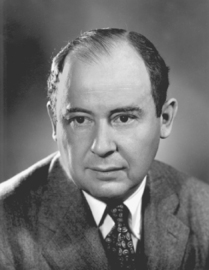
Dedicated to
John von Neumann (19031957)
Mathematician Extraordinaire
Preface
The purpose of this book is to lay bare the deep inner mathematical structure of biology, to show lifes hidden mathematical core. This new field, which I call metabiology, is only three years old. Much remains to be done. It remains to be seen how relevant this theoretical work will be to real biology. Nevertheless, I feel that the time is ripe to present this new way of thinking about biology to the world.




